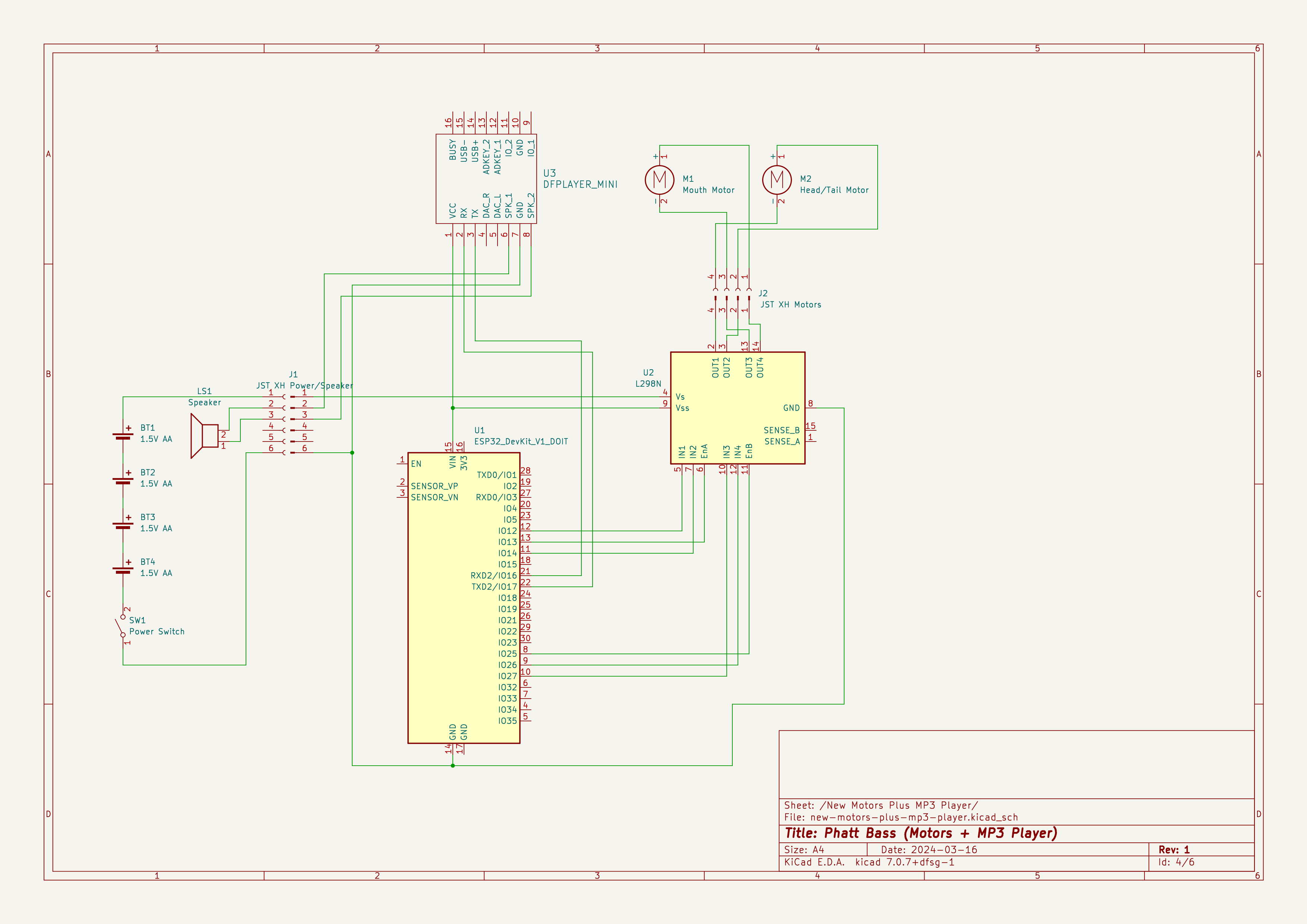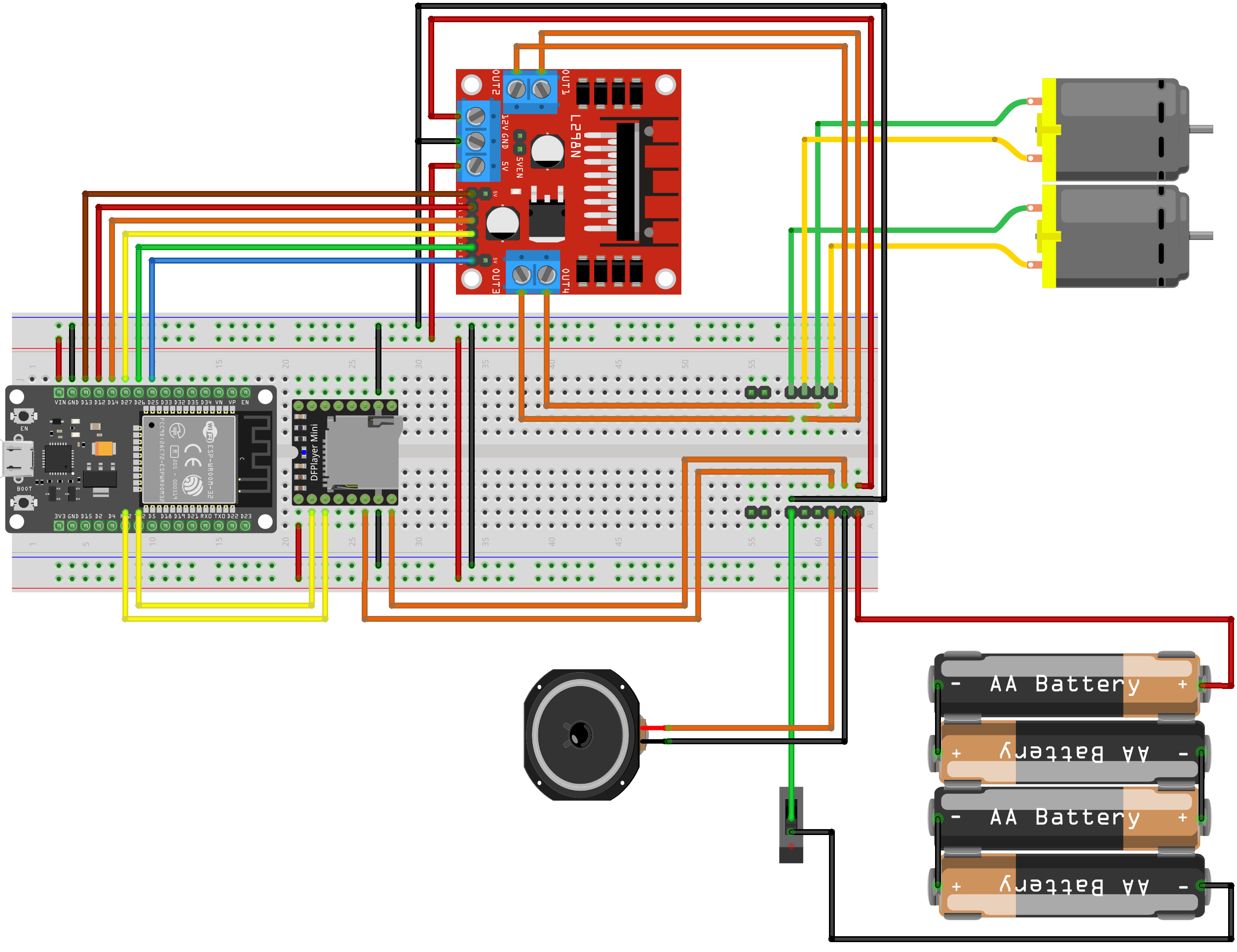The next step in building the Phatt Bass was audio output. While there are approaches to playing audio directly from an ESP32 chip, they are rather hacky, involving opening a .wav file in a hex editor and copying the raw hex into your program. Given that, even with that approach, we still need an audio amplifier board, I chose instead to use an MP3-TF-16P. This has an SD card slot from which it can play MP3s directly, taking play/pause/etc. commands via external button pushes or serial commands. It has its own on-board amplifier, so it’s really a full implementation of an MP3 player in one tiny $1 board.
Note if following along at home, that this board is pin-identical to the DFmini Player, which you may be able to find more easily where you are. However, there are some differences in behaviour to be aware of.
The speaker in a Billy Bass is a standard 8Ω model, so it can be driven directly from the output of the MP3-TF-16P. The board takes 5V input, which we have available.
I chose to use a serial interface with the ESP32 board to issue it commands. Its serial interface uses 3V3 levels, which luckily matches what’s used on the ESP32. You may see online guides adding a resistor or a level converter here when working with an Arduino’s 5V serial levels; this is not needed for ESP32.
After connecting up the new board to power, speakers and to Serial 2 on the ESP32, we now have the following:

I used example code from this page, replacing Serial3 with Serial2 in their examples, to prove that the ESP32 was communicating properly with the MP3-TF-16P:

I then loaded a single test MP3 onto the SD card. After some playing, and with reference to both the previous link and the serial interface details for the board, I settled on the following code to set the volume level, and play a 30-second clip of that MP3.
void setup() {
// Set up serial comms to MP3-TF-16P
Serial2.begin(9600);
while (!Serial2);
changeVolume(20);
playTrack(1);
delay(30000);
stop();
}
void loop() {
}
// Play a specific track number
void playTrack(int tracknum) {
sendCommandToMP3Player(0x03, tracknum);
}
// Stop the music
void stop() {
sendCommandToMP3Player(0x16, 0);
}
// Set volume to specific value
void changeVolume(int thevolume) {
sendCommandToMP3Player(0x06, thevolume);
}
// Send a command to the MP3-TF-16P. Some commands support one or two bytes of data
void sendCommandToMP3Player(byte command, int dataBytes) {
byte commandData[10];
byte q;
int checkSum;
commandData[0] = 0x7E; //Start of new command
commandData[1] = 0xFF; //Version information
commandData[2] = 0x06; //Data length (not including parity) or the start and version
commandData[3] = command; //The command
commandData[4] = 0x01; //1 = feedback
commandData[5] = highByte(dataBytes); //High byte of the data
commandData[6] = lowByte(dataBytes); //low byte of the data
checkSum = -(commandData[1] + commandData[2] + commandData[3] + commandData[4] + commandData[5] + commandData[6]);
commandData[7] = highByte(checkSum); //High byte of the checkSum
commandData[8] = lowByte(checkSum); //low byte of the checkSum
commandData[9] = 0xEF; //End bit
for (q = 0; q < 10; q++) {
Serial2.write(commandData[q]);
}
delay(100);
}
Now we can play music, it’s time to decide what to play!


Add a Comment